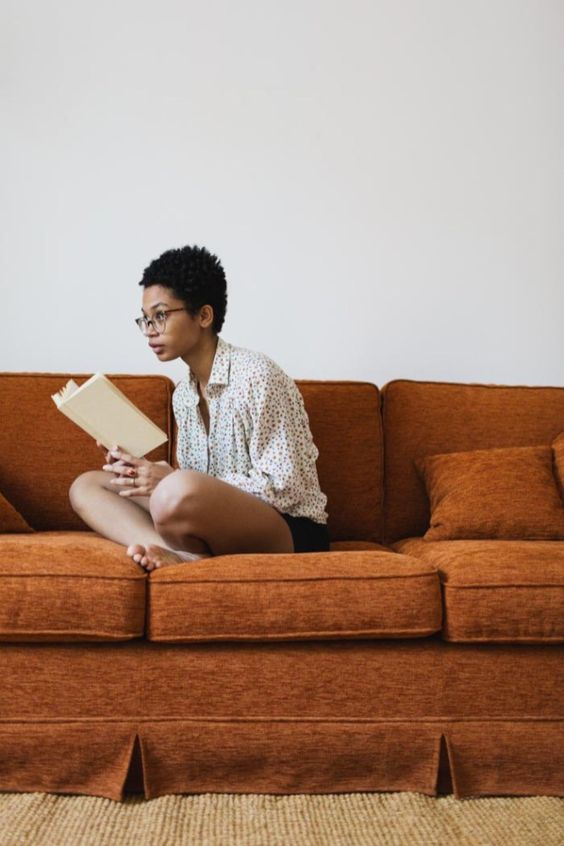When Crazy Rich Asians came out in theaters a few years ago, I was one of the many theater goers who applauded an all-Asian cast taking on the box office to so much fanfare and excitement. I saw the movie three times in an effort to support films featuring POC leads, and I assumed that everyone would be as thrilled as I was over this level of representation. But as I started to read more about the release, I found people asking what this particular film tells American audiences about the Asian experience. Are the entirety of Asian Americans supposed to feel seen because we had one film released with an Asian cast?
When I think personally about what South Asian representation has looked like through my eyes, I lean on just a handful of examples: Mindy Kaling’s The Mindy Project, Kunal Nayyar on The Big Bang Theory, Priyanka Chopra on Quantico, and Aziz Ansari’s Master of None. Some have said, “But you have main characters on TV! What more could you possibly want?” And to be fair, some do a better job, depending on the episodes, of sharing a nuanced look into the Indian-American experience. But other times, the experience is reduced to a colorful wedding episode. And while I’ve felt myself leaping for joy at the sight of any South Asian actor on my screen because I’m desperate to see anyone who represents me even in the slightest, there are also times where I think, “Just because I see someone who looks like me on screen, does it mean that I’m being seen?”
It was when I read this article that it hit me: we do not have to settle for being ‘almost’ represented.

Because there are a limited number of stories being represented at this point, our biases on what the South Asian experience (or any other culture or race) in America actually looks like often gets minimized to token experiences. And whether we consciously realize it or not, the media we consume affects not only our biases of those different from ourselves, but can also make underrepresented communities feel that their story is reduced to a diversity plot line or a box on the checklist. Do we think every Indian immigrant in America is like Raj Koothrapali with a thick accent? Do we make similar assumptions of any tokenized person of color based on how we see them represented in fictionalized work?
When Never Have I Ever was recently released on Netflix, it felt earth-shattering to me. There was a character on screen in a majority POC cast who was battling her identity between two cultures as the child of immigrants while growing up in America. She was presented with humor and a realness I hadn’t seen before. Maybe I was just extra emotional with all the added stress of quarantine, but for the first time, I saw the smallest glimpse of myself reflected on screen. I felt seen and recognized. My own experience of not feeling “enough” to fit into one world while struggling to accept my dual identity was brought to life on screen by this fictional character – along with the anger, frustration, and guilt that I’ve felt. The story on screen verbalized what I had never quite been able to share or explain, and it made me think I wasn’t alone in experiencing those emotions. I was floored to realize that I had gone twenty fives years without having seen another complex story of an Indian child of immigrants. Sometimes, it’s hard to understand what it is you feel until you hear someone else say it, live it, and embody it, and it’s this beautiful quality of storytelling that makes our efforts towards greater representation so important.

So it bears digging deeper into the idea that representation isn’t just about seeing people who are different. It’s about seeing your story and life experience represented in an authentic and honest way. And that can be complicated, because what is authentic to one person’s experience may not be for someone else. Case in point: the amount of criticism Kaling gets online for not representing the South Asian experience in a way that everyone in the community can relate to on The Mindy Project. But it’s her experience to share. The pressure put on any person of color to create or be something that somehow encompasses and represents the entirety of that community or culture’s experience is entirely unrealistic; they’re responsible only for sharing who they are and what their story is. The problem isn’t the creators, it’s the lack of opportunities BIPOC storytellers have had to share their own experiences that keeps people stuck in the feeling of “almost represented.”
There’s a Brené Brown quote that says “in order to empathize with someone else’s experience, you must be willing to believe them as they see it, and not how you imagine their experience to be.”
Keeping that approach in mind, I’ve started to approach work from the BIPOC community with an open mind and the goal of learning through someone else’s experience, without putting my expectations and need for representation on them. I recently read Etaf Rum’s A Woman is No Man, the story of an immigrant Arab family from Palestine who settles in Brooklyn. Even though this story wasn’t from my own community, I went into it with the expectation of reading an immigrant story that would share some of my own family’s experience in coming to America. And of course that led me to be frustrated when the narrative took an unexpected turn and didn’t represent what I was looking for in an immigrant story. But it’s not fair to expect creators to cater their stories to your expectations of their experience. To do so takes their truth and turns it into something inauthentic.

The push for representation is a push to share more honestly. It empowers those who have been historically underrepresented to reclaim their stories from others who have been given the privilege of sharing stories that are not theirs to tell. I want to see the spectrum of experiences within a culture or race that I may not have even realized were there (ie. the experience of an Indian from India versus an Indian from America) and continue digging deeper to understand the history and truths that we haven’t yet seen represented.
What I’ve discovered is that the more people from underrepresented groups share their work, the more empowered I feel as a POC in thinking that hey, maybe people will care about what I have to put out into the world, too. We can continue lifting up the diversity of stories that need to be told – and supporting diverse creators – by pushing for continued authentic diversity in the media we consume.
So let’s approach content with the goal of learning while letting go of expectations. Being intentional about the books we read and the shows we watch makes representation an integral part of our lives, while freeing those in underrepresented communities from the feeling of being invisible.
Because at the end of the day, representation means empowerment, and we can make daily choices that lift others up.




